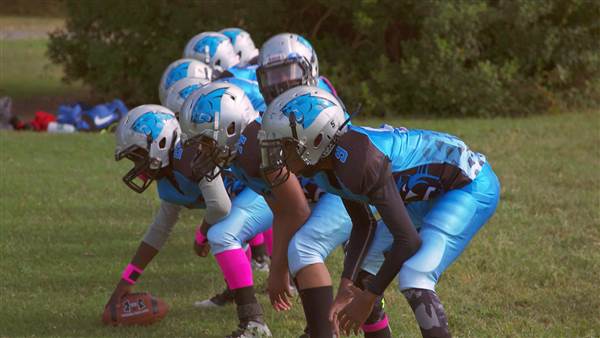- Study Says Most Parents Don’t Use Car Seats In Ride Share Vehicles Like Uber
- This 12-Year-Old Boy Is A Sophomore Aerospace Engineering Major!
- Fire Safety Experts Warn Of Hand Sanitizer Danger After A Mom and Kids Escape House Fire
- Recall Alert: Peaches May Be The Cause Of Salmonella Outbreak, 68 People Ill
- Summer Vacation In The Days Of COVID: Tips To Stay Safe
- How To Safely Grocery Shop During The Coronavirus Pandemic
- Michigan Teen With Vape-Related Illness Undergoes Double Lung Transplant
- Teen Kicks Off Anti-Vaping Campaign From Hospital Bed
- Teenager Receives Life Sentence For Strangling Sister To Death Over A Wi-Fi Password
- Toddler Falls To Death From 11th Deck of Cruise Ship
Is Football Safe for Kids? New Study Finds Brain Changes


After 25 years of playing football, six of them in the NFL, former Minnesota Viking Greg DeLong feels like a “walking time bomb” who could end up with brain disease from all the hits he took on the field.
And now DeLong has another reason to worry: His 12-year-old son Jake has followed him onto the gridiron —and is part of a groundbreaking study that found brain changes in children after just one season of suiting up.
The more head blows a child sustained, the more changes were seen in their brain tissue, according to the study released Monday. The effect was seen even in young players who did not have a concussion.

Although the preliminary findings don’t show whether the brain changes are permanent or will cause disease, they have some parents like DeLong questioning whether the sport is worth the risk.
“Football’s important to us, but there are other things out there that are more important,” he said.
Three million American kids take part in tackle football programs, and research has largely focused on the long-term effects of concussions, a form of traumatic brain injury.
A team from Wake Forest Baptist Medical Center decided to look beyond concussions to the hundreds of less serious head blows a player might receive during practices and games over the course of a season.
“This is important, particularly for children, because their brains are undergoing such rapid change, particularly in the age category from maybe 9 to 18. And we just don’t know a lot of about it,” said Dr. Chris Whitlow, one of the lead researchers.
The Wake Forest group studied 25 players between the ages of 8 and 13 in the South Fork Panthers youth football program in Winston-Salem, North Carolina.
Each boy was given a helmet outfitted with sensors that measured the frequency and severity of impacts — 60 percent of them absorbed during practice — and transmitted the information to a laptop on the sidelines.
Dr. Alex Powers, a pediatric neurosurgeon involved in the research, said it was surprising to see how forceful the grade-schoolers’ hits were.

“They are hitting at extremely high levels,” he said.
The collected data was analyzed against pre-season and post-season MRIs of the players’ brains. The high-tech scans looked for tiny changes in white matter, which is the tissue that connects the neuron-rich gray matter, the researchers said.
“We have detected some changes in the white matter,” Whitlow said. “And the importance of those changes is that the more exposure you have to head impacts, the more change you have.”
Just as important, Whitlow said, are the questions unresolved by the study.
“Do these changes persist over time or do they just simply go away? Do you get more changes with more seasons of play? And most importantly, do these changes result in any kind of long-term change in function like memory or attention or anything that would be important in your ability to function day to day?”
Answers may be years away. For now, all the Panthers’ parents know is that based on the study published by the journal Radiology, something is happening to their children’s brains during the season.







0 comments